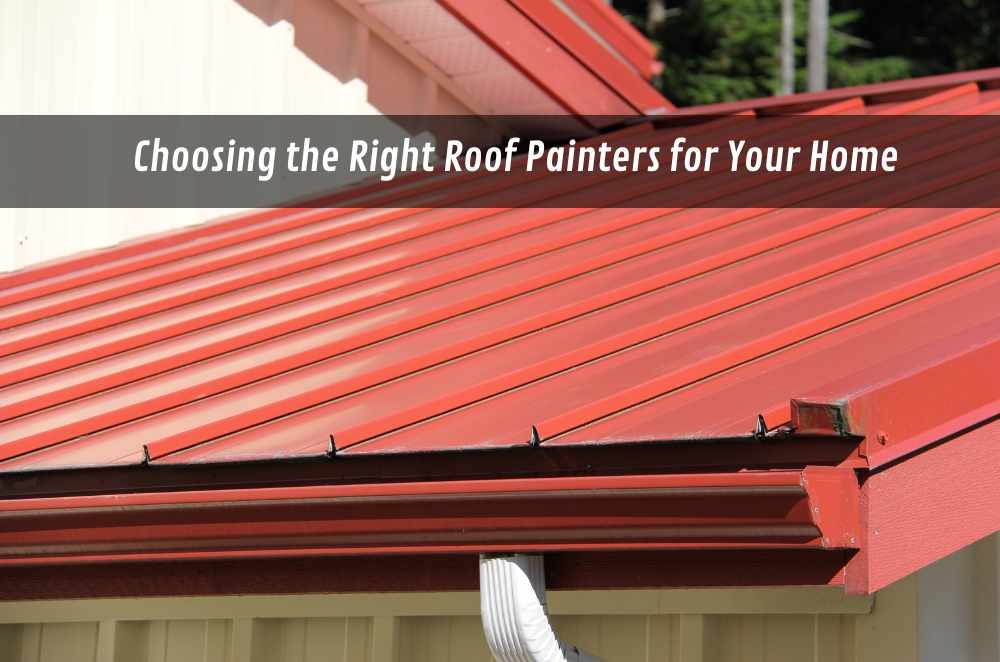
A solid roof keeps more than just the rain off your head. It stands between your home and every kind of weather Sydney can throw at it—scorching sun, heavy winds, days of steady drizzle. Yet sooner or later, even the best roof springs a leak or starts to show its age. In those moments, you want to act fast and get repairs done right the first time. For many households, the solution starts with reliable emergency roof repair—but what actually makes a repair job last?
It’s not just about patching a problem. The real difference is in the materials you choose. Some fixes hold up for years, while others might only get you through the next downpour. With so many new products and techniques on the market, it’s worth understanding what works best for your home, your roof style, and your local climate.
Knowing when it’s time to repair your roof
Sometimes, it’s obvious—a sudden leak, water stains on the ceiling, or a handful of shingles found in the backyard after a windy night. Other times, roof issues creep in slowly. You might notice moss growing along the ridge, flashing that’s come loose, or a bit of daylight peeking through the attic.
Water spots on ceilings or walls
Damp insulation or unexplained musty smells
Shingles, tiles, or metal sheets that are cracked, missing, or lifting
Sagging areas or visible dips in the roofline
Drips or puddles in the roof cavity after heavy rain
From experience, it’s the minor signs that can turn major quickly—especially in older homes where past repairs haven’t always been up to scratch.
Why materials matter for long-term results
Every roof repair starts with a material decision, and it’s not just about picking what’s on sale at the hardware store. The right material should suit your roof’s existing design, handle Sydney’s weather, and meet Australian standards for repairs and maintenance. Skimp on quality, and you’ll likely be back up there sooner than you’d like.
Metal roofs often need matching grade sheeting and rust-resistant fasteners
Terracotta and concrete tiles require correct underlays and adhesives to prevent leaks
Waterproof membranes must stay flexible, not brittle, in the sun and cold
Sealants and flashing tapes vary—a generic product may not last through wild temperature swings
Some older materials (like asbestos) need special handling by licensed pros
It’s amazing how much a difference a proper membrane or a weatherproof fastener can make—learned that the hard way after a “quick fix” that didn’t even last a season.
The essentials of a lasting repair
When you’re patching a roof, shortcuts can mean trouble. Lasting repairs usually mean investing in proper prep and the best materials you can afford.
Start with a clean, dry surface—remove all debris, moss, and loose material
Use underlays, sarking, or vapour barriers where recommended for extra weatherproofing
Check all overlaps, joints, and edges for tight seals and proper drainage
Apply sealants and coatings in dry, warm weather for best bonding
Replace—not just patch—any severely damaged tiles, shingles, or metal sheets
A mate once said: “You wouldn’t patch a pair of jeans with paper—so why use the wrong product on your roof?” That always stuck.
The value of regular roof service
Preventative checks can save a fortune down the track. Even a simple annual roof service can catch early issues and extend the life of every material on your home.
Professional inspections find hidden damage before leaks start
Cleaning gutters and valleys prevents water pooling and corrosion
Small fixes (like cracked pointing or loose flashing) can often be done on the spot
Routine maintenance keeps warranties valid for some modern materials
Documentation of repairs and checks is handy for insurance or resale
One year, a minor blocked gutter nearly turned into a ceiling collapse during a big storm. Caught it just in time, but only because a service was already scheduled.
DIY or call in the pros?
It’s tempting to climb up for a quick patch, but not every job should be DIY. Some materials and repairs are best handled by licensed tradespeople, especially when safety, height, or complex structures are involved.
DIY is safest for low, single-storey homes and simple, accessible patches
Steep, multi-storey, or fragile roofs need specialist equipment
Working with asbestos or other hazardous materials is always a pro job
Licensed trades can issue warranties and provide documented compliance
Years back, I thought a bit of sealant would fix a leaking ridge. Instead, water ran sideways and did more damage—ended up calling a pro, who explained the right technique and material for my roof type.
Roof maintenance tips for every season
No material lasts forever without some care. Regular maintenance doesn’t have to be complicated, but it makes a world of difference.
Clear gutters and downpipes at least twice a year, especially after storms
Check flashings, skylights, and vents for gaps or rust
Keep tree branches trimmed away from the roofline
Replace broken or missing tiles as soon as they’re spottedWatch for signs of moss, lichen, or leaf build-up
For a more in-depth look at seasonal strategies, guides like roof maintenance tips cover the habits that keep Sydney roofs watertight year after year.
When to consider emergency roof repair
There are times when you can’t wait for a sunny weekend. Storms, falling branches, or sudden leaks in the middle of the night call for immediate action.
Temporary tarping can limit further damage until proper repairs are done
Document the issue for insurance with photos and notes
Don’t enter rooms where ceilings are sagging or leaking heavily
Call a licensed emergency roof repairer if safety is at risk
A neighbour once woke up to water dripping right over their fuse box. A fast response from an emergency crew stopped a bad day from getting worse.
Bringing it all together: A roof that lasts
Every repair is a chance to improve what’s overhead, not just patch up the past. Durable materials, careful prep, and regular service mean fewer surprises when the weather turns wild. And when it comes to your home, peace of mind is worth every careful choice.
It isn’t about having the latest trend, but about picking what works for your home, your climate, and your peace of mind. The best repairs are the ones you forget about—because they hold up, season after season, with barely a second thought.







Write a comment ...